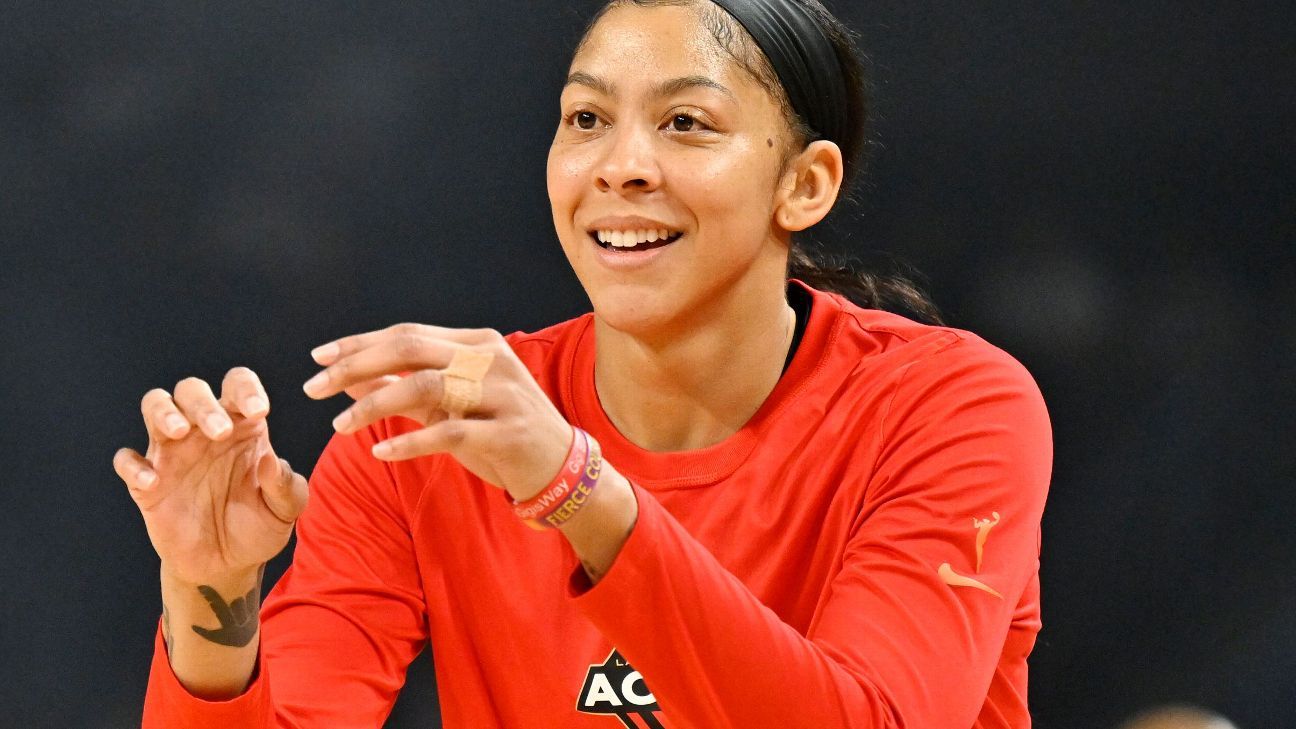In May 2019, around 200 of North America’s best women hockey players decided they wouldn’t play for another league until there was a serious and sustainable one, with the “resources that professional hockey demands and deserves”. Previous leagues, like the Canadian Women’s Hockey League, had either folded, or in the case of the Premier Hockey Federation, were cash-strapped and offered subpar working conditions. The players wanted decent pay, for one. They also felt they deserved the same kind of protections, like health insurance, that other professionals – athletes or otherwise – are usually unquestionably afforded. They wanted more than just a new place to play. They needed, and needed for others to have, a destination.
Some of those breakaway players were at Scotiabank Arena in downtown Toronto on Friday night at ‘the Battle on Bay Street’, a midseason marquee matchup between Montreal and Toronto’s new Professional Women’s Hockey League teams. The PWHL, which launched in January, is a product of their 2019 decision. And the Professional Women’s Hockey Players’ Association, formed in that boycott, is now a union with a collective bargaining agreement with the PWHL. The CBA runs through 2031, ensuring salaries of up to USD$80,000, competition bonuses, life and health insurance, workers’ compensation and parental leave. In other words, the same kind of deal the men have had for ages. On Friday, the two women’s teams had something else usually only afforded their male peers: a crowd of 19,285, the highest-ever attendance at a women’s hockey game.
A significant proportion of those fans were young girls wearing their own team jerseys, the seats a sea of local minor hockey crests vying for a spot on the massive screens above centre ice. They watched as third-place Toronto and second-place Montreal began nervously, before settling into a tight physical game, in which Toronto took the majority of penalties. The second period drew no goals, but five minutes into the third, Toronto’s Jesse Compher scored her first of the season to make it 1-0. The roof blew off, all the pent-up energy released. A second Toronto goal from Hannah Miller with four minutes remaining, followed by an empty-net tally from Victoria Bach, sealed it for the home side 3-0.
TORONTO GOAL
BEDLAM AT SCOTIABANK ARENA
Jesse Compher sends this crowd into a frenzy. Her first of the season. Toronto leads Montreal 1-0 in the third period. pic.twitter.com/1SFVwfjxRf
— Devin Heroux (@Devin_Heroux) February 17, 2024
All night, the atmosphere inside Scotiabank was concert-like. No business-drunk seriousness of the Maple Leafs’ crowds, the building’s usual tenants. Comparisons to the men are well-worn, but they remain for now an inescapable part of these inaugural PWHL games. Friday’s event was foremost an effort to build and secure a healthy fanbase, but it was also a necessary statement.
In 2010, then-IOC president Jacques Rogge considered dumping women’s hockey from the Winter Games if the talent gap couldn’t be closed between the North American teams and those from the rest of the world. That summer, Hayley Wickenheiser, Canada’s team captain, explained why the disparity existed. Funding was part of it – Canada and the US had more. But there was also the question of career pathways. “We have to keep players in the game,” Wickenheiser said. “So many women, after they graduate and have nowhere to play, simply leave the game.” Needless to say, that is not what happens to the men. They have development tracks, cultural and social support, and access to education and jobs via hockey. The men have infrastructure – not just a place to go, but ways to get there. All of which is ultimately downstream from one thing: the NHL.
Before Friday’s puck drop, Lindsay McLelland of Rockwood, Ontario, stood on the second-level concourse. Asked what the PWHL’s existence meant to her and her daughter, Brynn, a young hockey player, she said it meant quite simply “a future in the sport”. Downstairs, 9-year-old Victoria from Brantford, Ontario echoed that idea. “It’s not just about the boys playing hockey, it’s about the girls, too. I’m glad they have a league.” Nearby, a woman named Jennifer, from Kitchener, Ontario (who did not give her surname) recalled her own experience. “I played as far as I could and chose not to pursue it … because I knew there wasn’t that future opportunity for myself,” she said.
“You saw the crowd today. It’s just super exciting to hear the fans and give them something to watch,” Compher said after the game. “We’ve been working for this for a long time and to see people support us and give us what we deserve is something really special.”
It has indeed taken a while. One evening a long time ago, there was another women’s hockey game played in downtown Toronto. At the Mutual Street Rink – later the site of the Mutual Street Arena, home of the Toronto Arenas, St Patricks and, later still, the Maple Leafs – the Wellington ladies’ hockey team of Toronto defended their championship against nearby Waterloo. It was Thursday 14 February 1907 – this week, 117 years ago. Toronto won 6-0 but, “while the better team won, the score is not quite a criterion of the night’s play,” the Toronto Daily Star reported the next morning. “The girls were very much in earnest all the way, and, considering the handicap afforded by three-quarter skirts, put up a very good exhibition of Canada’s national winter pastime.” A larger crowd than usual had turned up that night. They were unexpectedly impressed. The Daily Star reporter admitted: “Many came to laugh, but remained to admire.”
Here’s the thing: you can’t be serious about a sport unless the sport takes itself seriously, which is what professional leagues are for. Of the multiple disparities that have persisted between men and women’s hockey in North America, the eagerness to professionalize one but not the other has been most damaging. Beyond restricting practical things like financial support for the women’s game at all levels, it has also unfairly meant that for decades a girl’s hockey dreams for stardom were less credible than a boy’s. Because, without a serious and sustainable pro league, the perception of women’s hockey was allowed to remain unchanged since the turn of the last century: a bit of a joke. Even though everyone has known the whole time that it was anything but.
Friday was good hockey. As good a professional exhibition of Canada’s national winter pastime as it gets. It belongs in this place, it always has.

Daniel Miller is a sports fanatic who lives and breathes athletics. His coverage spans from major league championships to local sports events, delivering up-to-the-minute updates and in-depth analysis for sports enthusiasts.




:max_bytes(150000):strip_icc():focal(728x321:730x323)/kate-hudson-bill-hudson-042624-1a-98ec5edb65f44ee19d94b512da307611.jpg)

